
Category

Two Coresolar System Photovoltaic Flexible Copper PV Solar Panel Electrical Wire 2.5mm2 4mm2 6mm2 10mm2 DC Electric Solar Fiber Optic Cable
In the solar photovoltaic power generation system in the low-voltage DC transmission part of the cable, because the use
Basic Info.
| Model NO. | TUV IEC62930 PV1-F Xlpo XLPE |
| Certification | TUV,UL,IEC,CE, CPR,ISO, RoHS, |
| Wire Core Material | Tinned Copper |
| Make | Suzhou Yonghao Cable Co.,Ltd. |
| Transportation | Sea, Land and Air |
| Color | Red,Black,Other |
| Incoterms | Fob,CIF,CFR,DAP |
| Transport Package | Pallet, Drum, Reel, Wooden Box |
| Specification | PV1-F 4mm2 6mm2 Double Insulation |
| Origin | China |
| HS Code | 85446090 |
| Production Capacity | 1, 200km/Days |
Product Description
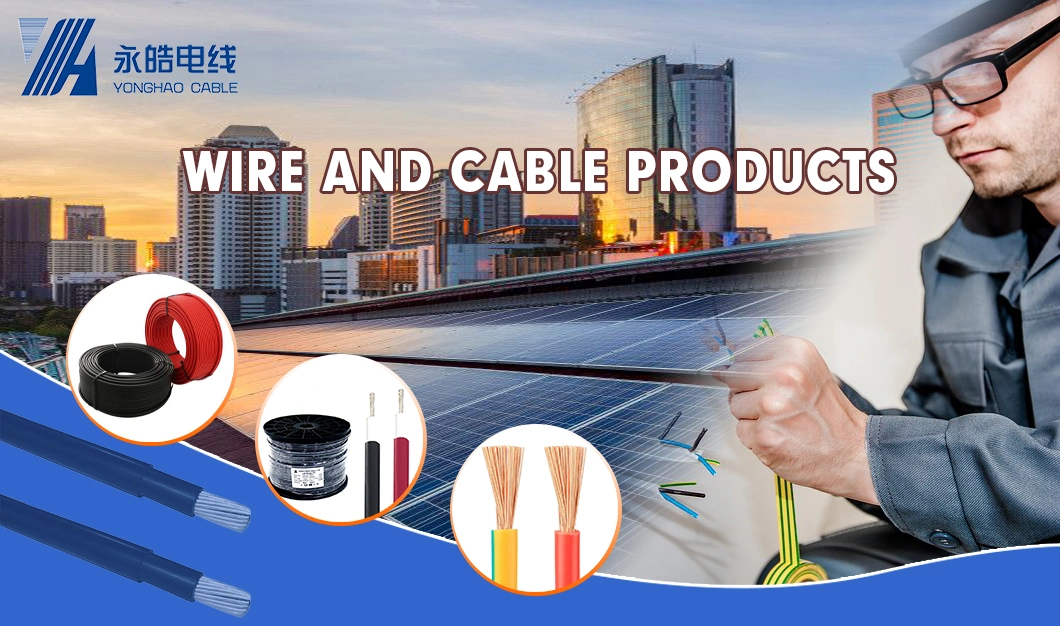
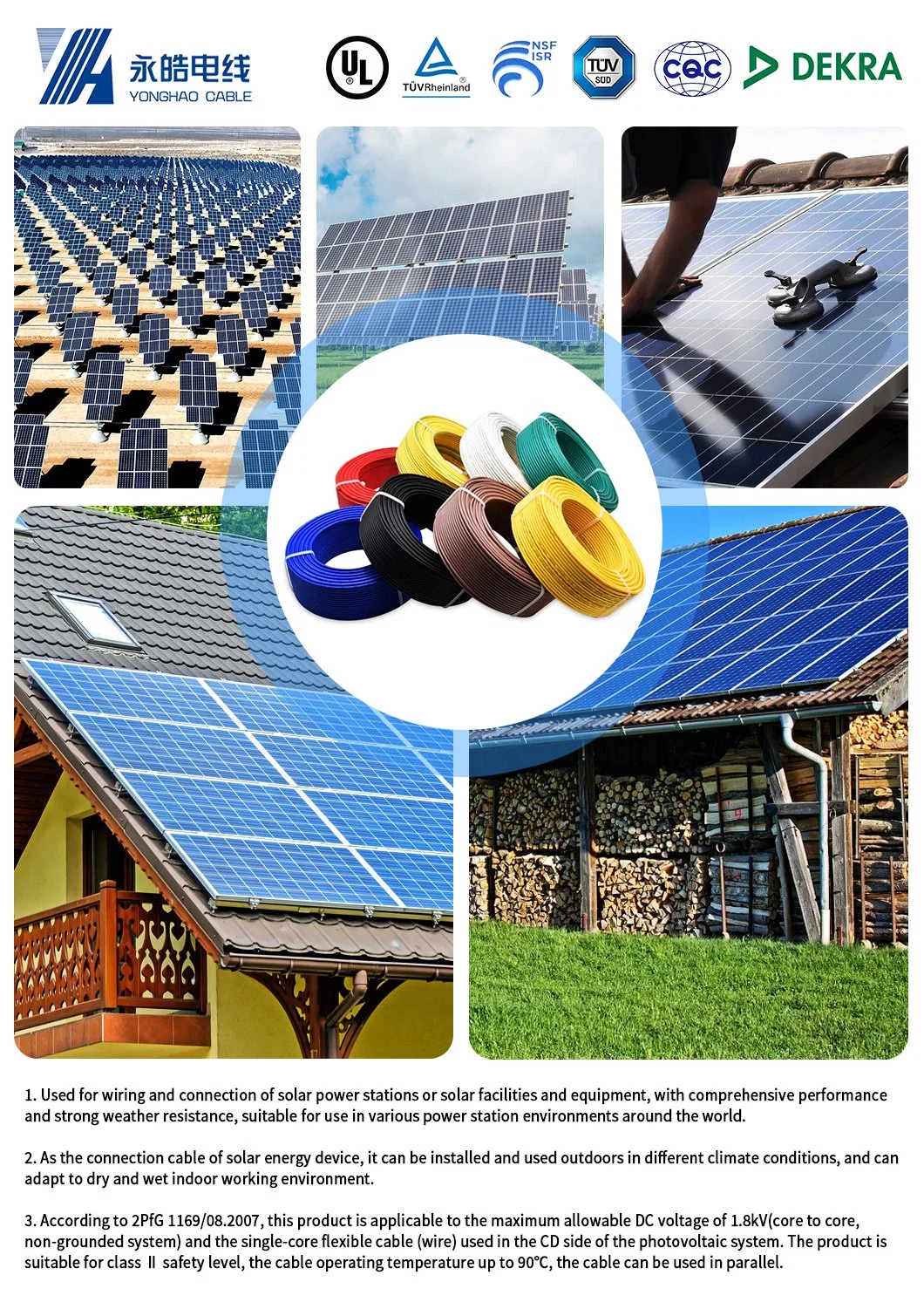
Use | for Solar Plants Distribution System |
Ambient Temperature | -40ºC~+90ºC |
Test Voltage | 6500V, 50Hz, 5min |
Ambient Temperature | 25 Years (TUV) |
Origin | China |
Production Capacity | 1200km per day |
Certification | TUV |
Product Name | DC Solar PV Cable |
Color | Black ,Red ,Brown,Grey Or Customized |
Specification | 1.5mm2, 2.5mm2, 4.0mm2, 6.0mm2, 10.0mm2, 16.0mm2, 25.0mm2, 35.0mm2 |
Number of Cores | Single Core,Two Core |
Transport Package | Drum or Roll |
Rated voltage | AC:Uo/U=0.6/1.0KV DC:1.0KV |
Voltage test on completed cable | AC:6.5KV DC:15KV,5min |
Weathering /UV-resistance | HD605/A1 |
ACID and Alkali resistance | EN60811-2-1 |
Cold bending test | EN60811-1-4 |
O-zone resistance at complete cable | EN50396 |
Flame test | IEC60332-1 |
Max Temperature at conductor | +120ºC |
Service Life | 25 years(-40ºC~+90ºC) |
Approvals | TUV Rheinland |
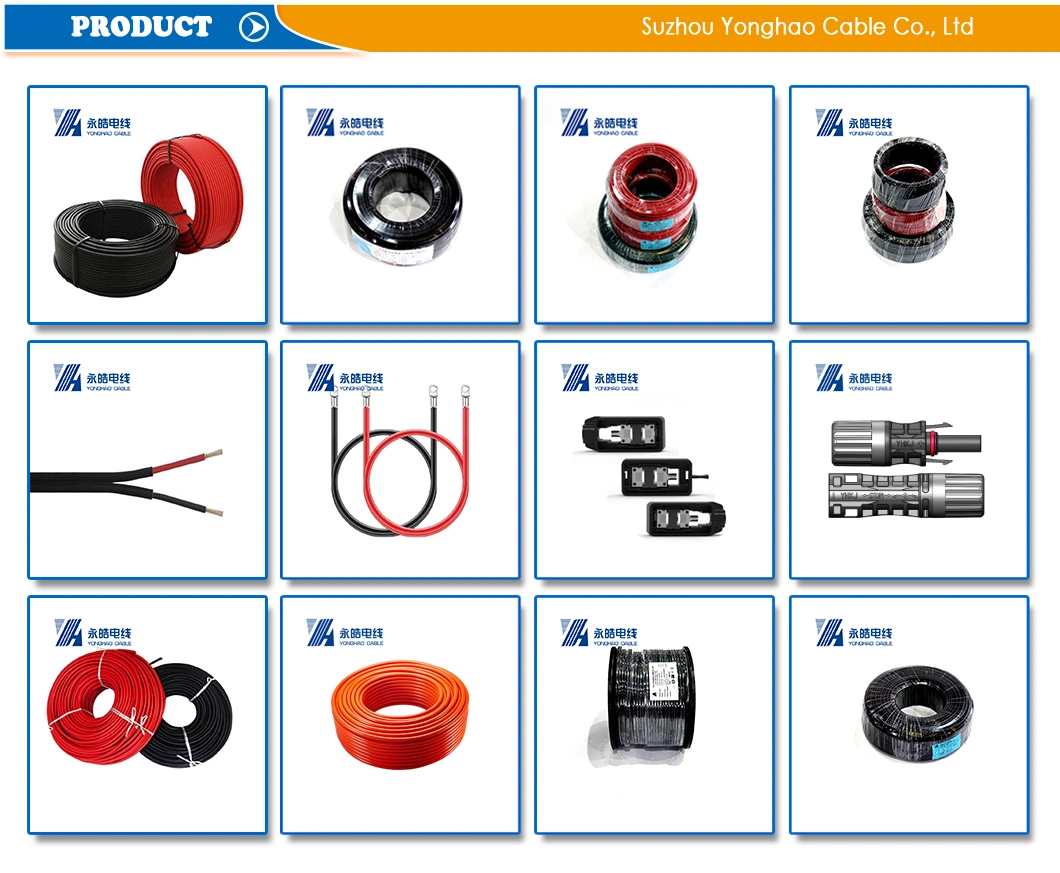
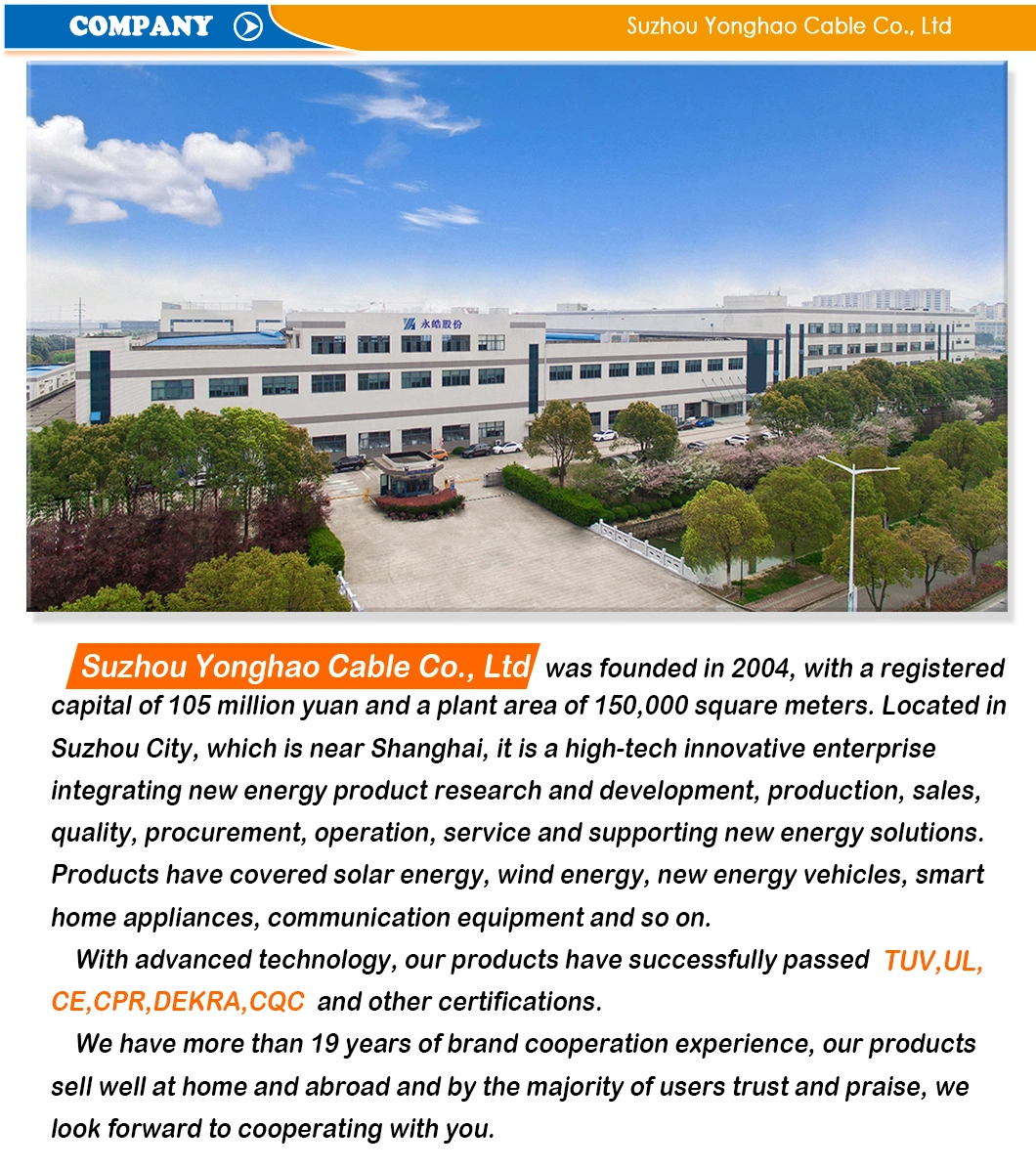
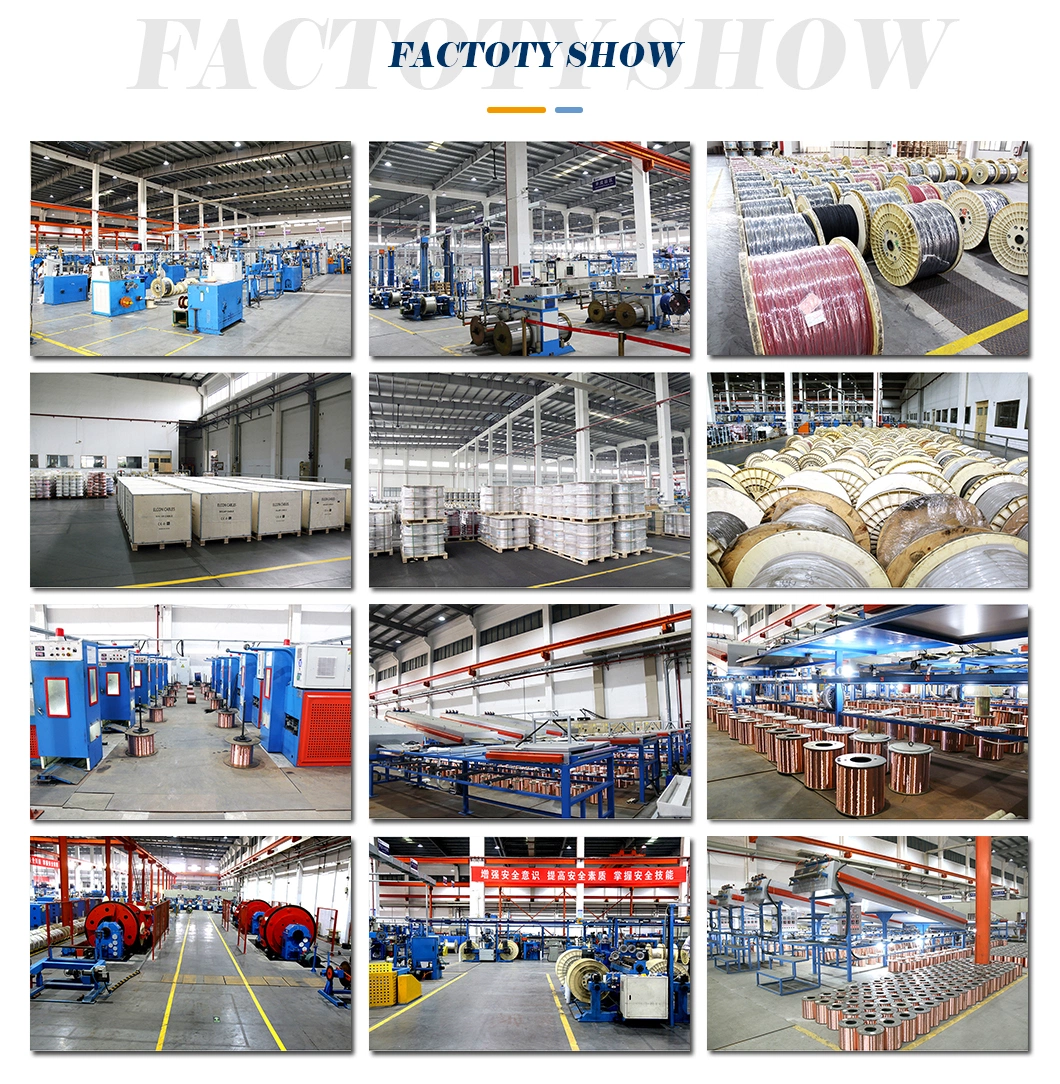
In the solar photovoltaic power generation system in the low-voltage DC transmission part of the cable, because the use of the environment and technical requirements are different, the connection of different parts have different requirements, the overall factors to consider are: cable insulation performance, heat resistance and flame retardant performance, aging performance and wire diameter specifications.
1. The connection cable between the solar cell module and the module is generally connected directly by the connection cable attached to the module junction box. When the length is not enough, a special extension cable can also be used. According to the different power size of the component, this kind of connecting cable has a cross-sectional area of 2.5m square meters, 4.4m square meters, 6.0m square meters and other three specifications. This kind of connecting cable uses double insulation outer skin, has superior protection against UV, water, ozone, acid, salt erosion ability, superior all-weather ability and wear resistance.
2. Use a multi-strand flexible cable that passes the UL test to connect the battery to the inverter. Choosing short and thick cables can reduce system losses, improve efficiency, and enhance reliability.
3. The cables connecting the battery array to the controller or DC junction box must also use multi-strand flexible wires that pass the UL test. The cross-sectional area depends on the maximum output current of the battery array.
The cross-sectional area of the DC cable at the named location shall be determined according to the following principles: Cables connecting solar modules, batteries and batteries, and AC load cables. Generally, the rated current of the cables is 1.25 times of the maximum continuous working current of each cable. For connecting cables between the solar cell array and the square array, and connecting cables between the battery (group) and the inverter, the rated current of the cable selected is generally 1.5 times of the maximum continuous working current in each cable.








